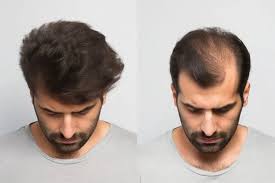Introduction
Hair loss is a common concern that affects both men and women, impacting self-esteem and overall confidence. Fortunately, advancements in hair restoration techniques have made it possible for individuals to achieve thicker, healthier hair through Hair Transplant in Riyadh procedures. Riyadh, the capital of Saudi Arabia, is rapidly emerging as a premier destination for high-quality hair transplants. With a combination of expert surgeons, cutting-edge technology, and personalized care, Riyadh offers solutions that can help you regain not just your hair, but also your confidence.
Understanding Hair Transplantation
A Hair Transplant in Riyadh is a surgical procedure that relocates hair follicles from a donor area (typically the back or sides of the scalp) to areas experiencing hair thinning or baldness. Unlike temporary solutions like wigs or topical treatments, hair transplants provide a permanent and natural-looking solution to hair loss. This makes them an increasingly popular choice for those seeking to enhance their hair’s thickness and health.
Why Consider a Hair Transplant?
- Permanent Results: Once transplanted, hair follicles are genetically resistant to the factors that cause hair loss, providing a lifelong solution. Patients can enjoy a full head of hair that looks and feels natural.
- Improved Self-Esteem: Many individuals who undergo hair transplant procedures report a significant boost in self-confidence, which can enhance their quality of life in both personal and professional settings.
- Natural Appearance: Advanced techniques used in Riyadh’s clinics ensure that transplanted hair blends seamlessly with existing hair, resulting in a natural look that is difficult to distinguish from real hair.
Advanced Techniques for Hair Transplantation in Riyadh
Riyadh is home to several advanced hair transplant techniques designed to cater to individual needs. Here are some of the most popular methods available:
- Follicular Unit Extraction (FUE):
- FUE is one of the most widely used hair transplant methods today. It involves the extraction of individual hair follicles from the donor area, which are then implanted into the thinning or balding areas of the scalp. This minimally invasive technique leaves minimal scarring and promotes faster recovery, allowing patients to return to their daily activities quickly.
- Direct Hair Implantation (DHI):
- DHI is an innovative variation of FUE that utilizes a specialized tool to implant hair follicles directly into the scalp. This technique allows for greater precision in the placement of each follicle, resulting in a denser and more natural appearance. DHI reduces scalp trauma, which can lead to quicker healing times.
- Robotic Hair Transplantation:
- Utilizing the latest advancements in artificial intelligence, robotic hair transplantation offers enhanced accuracy in follicle extraction and implantation. This technology minimizes human error, ensuring consistent and reliable results. Robotic systems also provide faster procedures, allowing patients to benefit from advanced technology.
- Follicular Unit Transplantation (FUT):
- While FUE is more common, FUT remains an effective option for individuals requiring a larger number of grafts. This method involves removing a strip of scalp tissue from the donor area, from which individual follicles are harvested and transplanted. FUT may be recommended for patients with extensive hair loss.
The Hair Transplant Process
- Initial Consultation: The first step in the hair transplant journey involves a thorough consultation with a qualified surgeon. During this assessment, the surgeon evaluates the patient’s hair loss pattern, discusses goals and expectations, and recommends the most suitable technique.
- Surgical Procedure: Hair transplant procedures are typically performed under local anesthesia, ensuring patient comfort throughout the operation. The duration of the surgery varies based on the number of grafts needed and the technique used.
- Post-Operative Care: After the procedure, patients receive comprehensive aftercare instructions to promote healing and hair growth. Common post-operative advice includes avoiding strenuous activities, proper scalp hygiene, and following prescribed medications to manage discomfort.
- Hair Growth Timeline: Patients can expect to see initial hair growth within a few months. However, it typically takes around 9 to 12 months for the full results to manifest, revealing thicker, healthier hair that continues to grow naturally.
Why Riyadh is a Top Destination for Hair Transplants
- Skilled Surgeons: Riyadh boasts a pool of highly trained and experienced hair transplant surgeons. Many have received international training and specialize in the latest techniques, ensuring patients receive the best possible care.
- Advanced Facilities: The clinics in Riyadh are equipped with cutting-edge technology and adhere to high standards of safety and hygiene, creating a comfortable environment for patients.
- Affordability: Hair transplant procedures in Riyadh are often more cost-effective than those in Western countries, making it an attractive option for individuals seeking quality care at a reasonable price.
- Personalized Approach: Each patient receives a customized treatment plan tailored to their unique hair loss pattern and goals. This personalized care maximizes the effectiveness of the procedure and ensures optimal results.
Conclusion
If you’re looking to achieve thicker, healthier hair, a hair transplant in Riyadh may be the solution you’ve been searching for. With advanced techniques, skilled professionals, and a commitment to patient care, Riyadh stands out as a premier destination for hair restoration.
Say goodbye to hair loss and hello to a more confident you! Embrace the journey toward a fuller head of hair and enjoy the lasting benefits of expert hair transplantation in Riyadh. Your path to thicker, healthier hair starts here!
